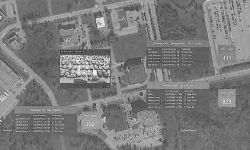Michigan State security upgrades a work in progress, one year after shooting
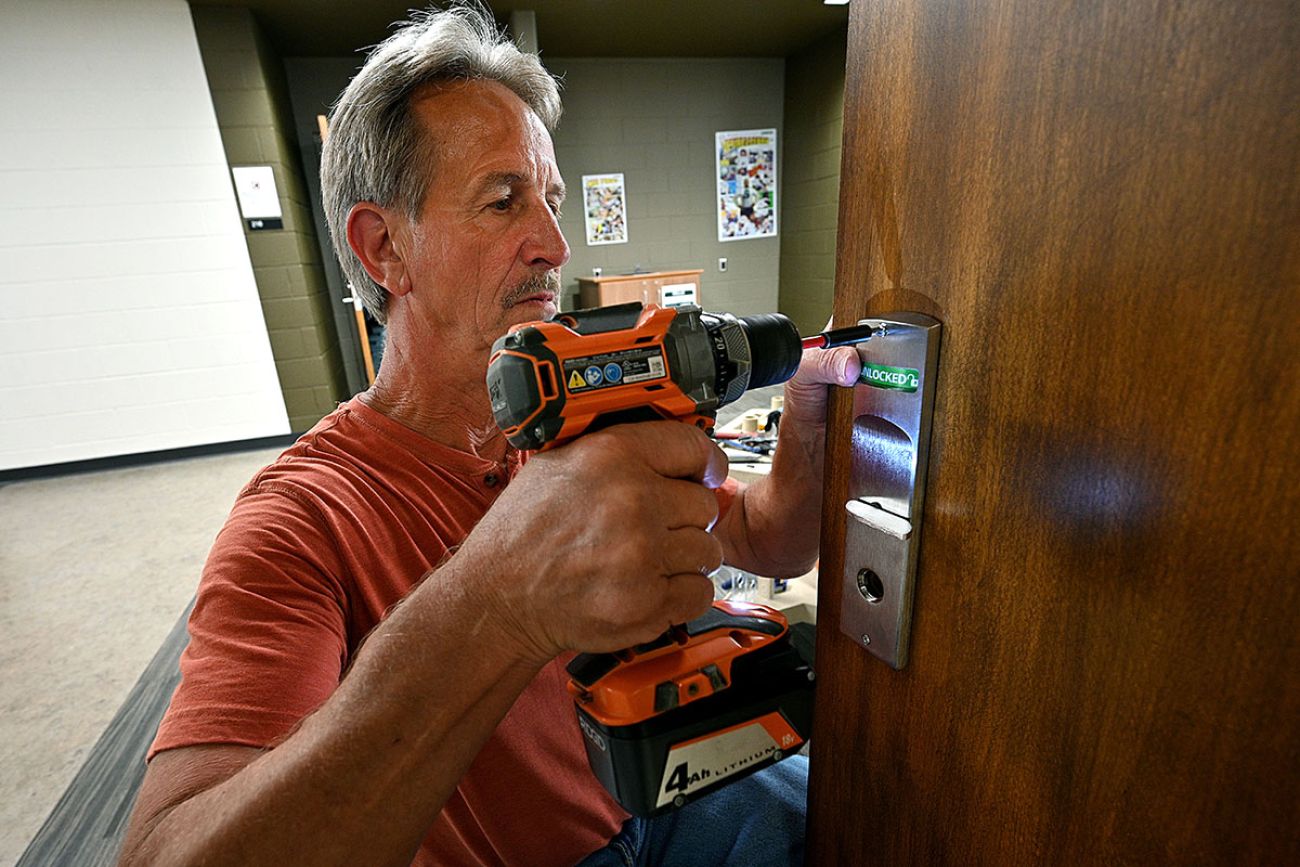
- Michigan State outlined several new safety initiatives after a campus shooting last year
- Michigan State University anticipates it will complete door lock installations a year behind schedule
- MSU is centralizing its security system, but details remain vague
EAST LANSING — One year after a gunman killed three students and terrorized Michigan State University, officials are making progress on security upgrades, but much work remains and some efforts are behind schedule.
More classrooms have locks. Buildings are secured each evening, with locked key card panels. Green-light security phones already spread across campus can now also emit tone-based alarms.
Other efforts, such as implementing a centralized security system, will take years. Outgoing Vice President and Chief Safety Officer Marlon Lynch acknowledged many updates remain “in progress.”
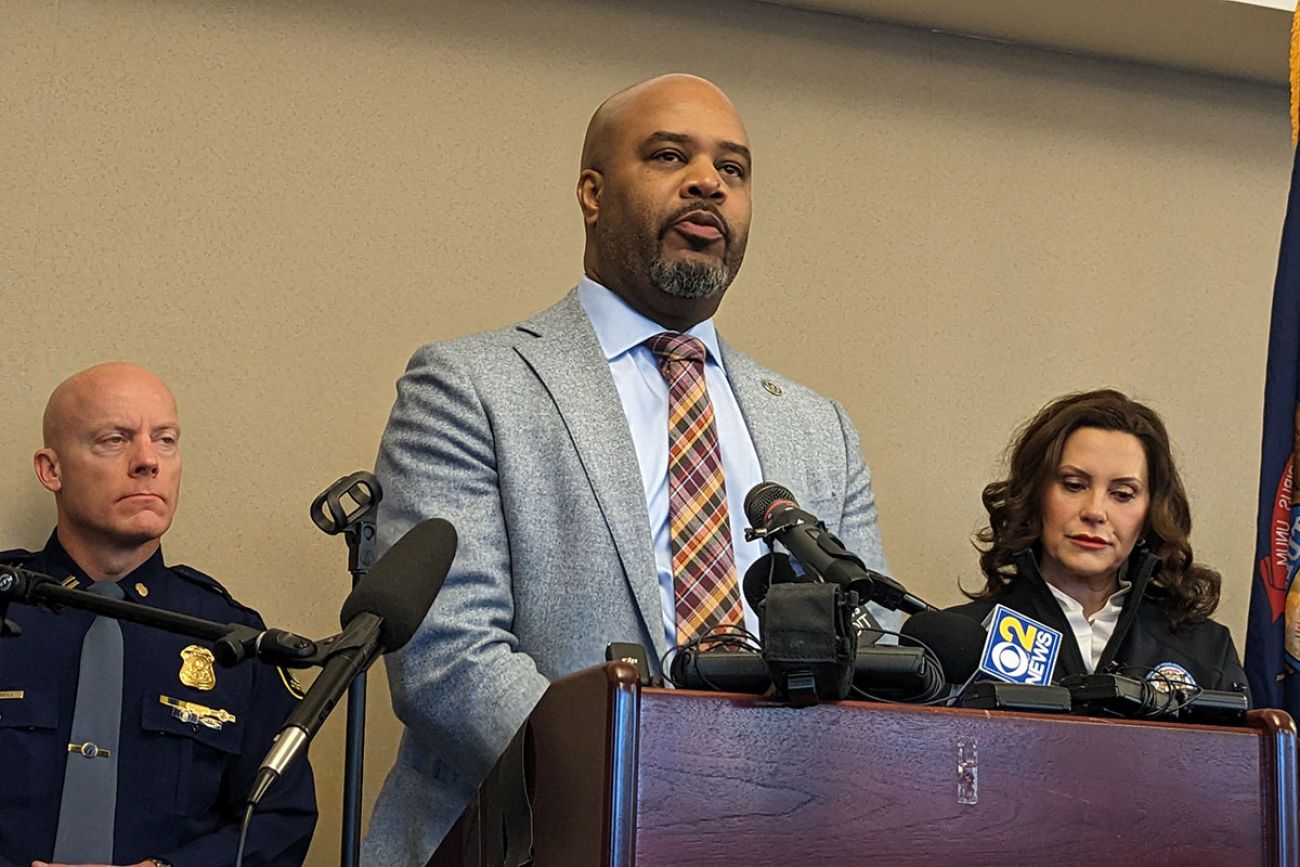
"Progress is happening, it just may not be as quick as we all would like it," said Emily Hoyumpa, president of the Associated Students of MSU, the undergraduate student government association.
Hoyumpa told Bridge she regularly meets with Lynch, who in a Jan. 30 email to students noted the university had installed metal detectors at sporting venues and was working on other initiatives.
Related:
- MSU professor saw students die. A year later, he fights for ‘a good life’
- Lawyers: MSU to pay $15M to families of 3 students killed in campus attack
- What Michigan State asked, and didn’t ask, in its review of campus shooting
- Michigan State students demand tougher security at emotional town hall
It’s unclear just how much these efforts have cost. MSU declined to disclose how much it has invested in security upgrades since the shooting, directing Bridge Michigan instead to file a Freedom of Information Act request, a process that can take several weeks or months.
Life on campus is largely “back to normal,” said Matias Jimenez, 22, who was getting dinner with friends in the MSU Union on Feb. 13, 2023, when shots rang out. He took shelter in a nearby residence hall, huddling in a dorm room with two strangers.
A year later, Jimenez told Bridge he no longer goes out alone at night but otherwise generally feels safe on campus again.
In a nation where mass shootings are not uncommon, Jimenez said there’s only so much MSU can do.
“This can happen anywhere now,” he said.
The shooting occurred when a Lansing loner, Anthony McRae, took a bus to campus, walked into Berkey Hall and began firing into a night class in Room 114, killing students Arielle Anderson and Alexandria Verner and injuring five others.
The shooter then walked to the MSU Union and killed student Brian Fraser, before walking more than 4 miles toward his home in northern Lansing. Hours later, he killed himself after being confronted by police.
The incident revealed a host of security gaps at MSU.
Records emerged after the shooting showing that faculty members had complained months before the shooting about the inability to lock doors from inside. A mix-up that MSU still hasn’t fully explained caused police to delay sending a warning to the students and staff to shelter in place for more than 10 crucial minutes. And as the gunman walked through campus, the campus’ security system made it impossible to monitor his movements in real time.
This is where the university stands nearly one year later.
Locks
After the shooting, Michigan State announced plans to lock most campus buildings earlier each evening and to install more than 1,300 classroom door locks by the start of the fall semester.
Bridge visited the university this week and confirmed external doors to both Berkey Hall and the MSU Union were locked at around 8:15 p.m., when the shooter began his deadly spree one year earlier.
Key card access is now required to enter either building after 6 p.m., which was not the case when McRae walked from the street into both buildings undeterred.
But the university has not yet finished installing locks on all classroom doors, and it does not expect to complete the work until this fall – a year behind schedule.
Officials say their initial estimate of needing 1,300 classroom door locks was too high. MSU's Department of Infrastructure and Planning Facilities later said 800 locks would be needed to complete the job.
Overall, the project is 82% complete, according to Dana Whyte, a spokesperson for MSU’s Department of Police and Public Safety.
The effort has been slower than expected, she said, because MSU has not been able to install them while classes are in session.
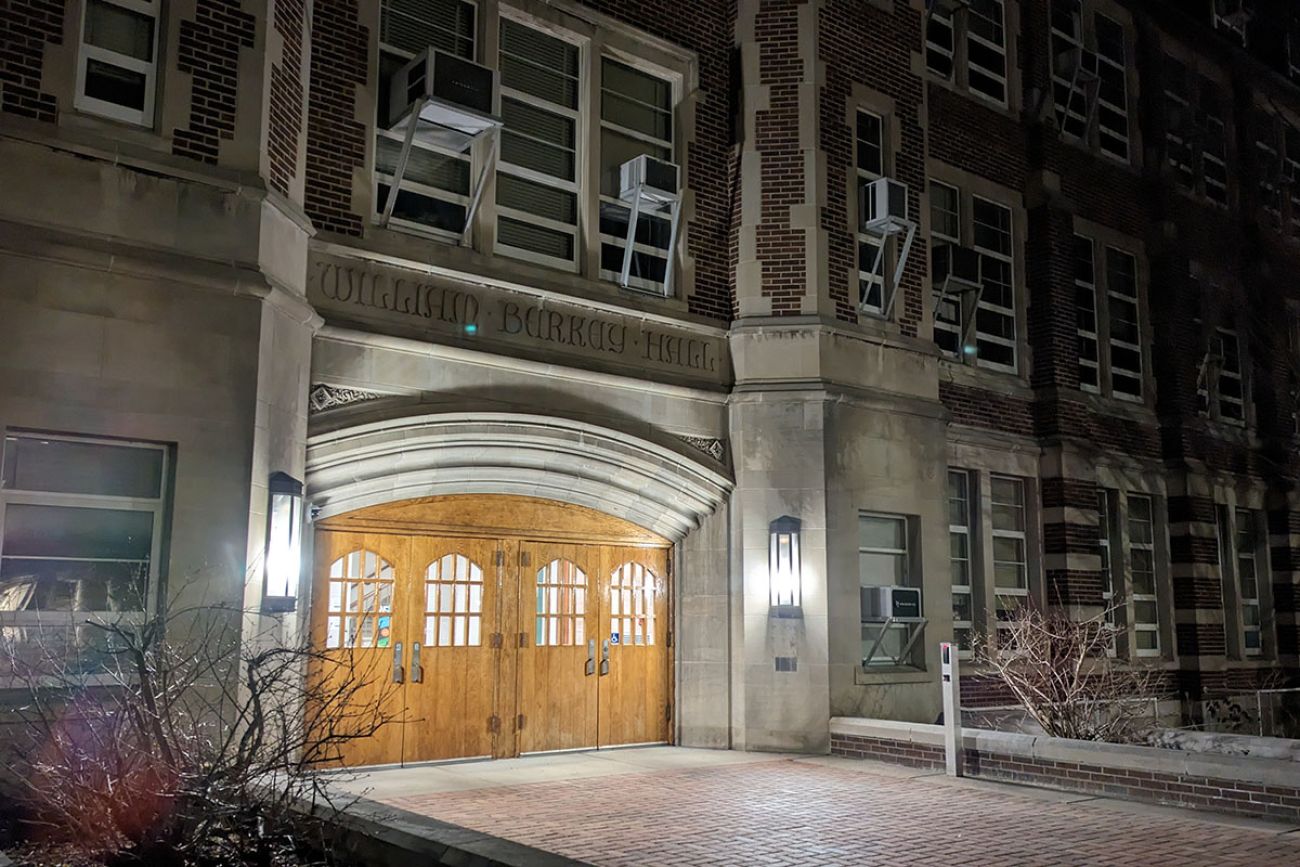
Centralized security
Last year’s shooting was compounded by tragic timing: MSU was in the midst of an already announced but slow-moving plan to upgrade its entire security operations network.
MSU in November 2022 had requested bids from private contractors to create a "unified security platform" that would centralize video surveillance feeds, alarms and other systems traditionally overseen by multiple entities across campus.
The university was already behind: Most Michigan colleges already had the ability to lock down buildings from a central location and monitor any camera on campus, according to a March 2023 Bridge survey.
One year later, MSU’s overhaul is still in the works and may take another two or three years to complete, according to the university, which is currently building a permanent home for its new Security Operations Center.
MSU is working with a Canadian-based firm called Genetec on a technology overhaul but has twice delayed a public records request from Bridge for contracts and bidding documents related to the new security platform.
The university currently has the ability to remotely lock about 95% of buildings on the East Lansing campus and is planning remote access to most other buildings, except unique facilities like livestock barns, Whyte said.
MSU has consistently said it has more than 2,000 security cameras across campus and is in the process of installing “more than 200” others that will be integrated with the security center, she said.
New gun rules
Along with physical security changes, MSU in September tightened its campus gun ban by eliminating an exception for visitors with concealed pistol permits, who had been allowed to carry outside buildings. Under the revised rules, visitors with permits can only carry in their car while driving through campus.
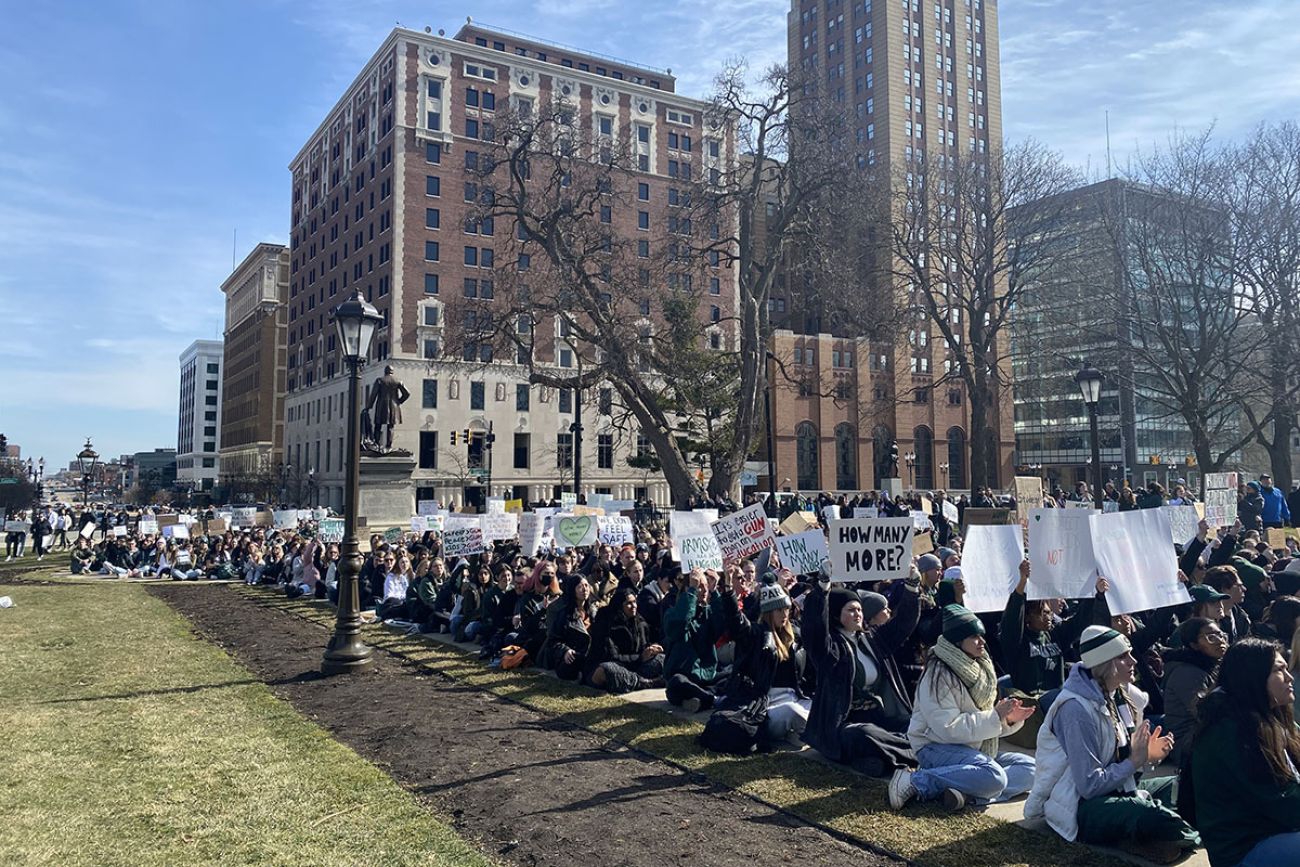
The policy change has no direct connection to the MSU shooter, who did not have a concealed permit but carried two guns onto the campus anyway.
Michigan lawmakers last year also approved new firearms restrictions, including a "red flag" gun law that will allow court-ordered confiscation from people deemed by a judge to pose a threat to themselves or others.
It's unclear if that law, which takes effect Tuesday, would have deterred McRae. Police say he likely had mental health issues but had passed a background check required to purchase his guns.
Active violence training
Less than a month after the deadly campus shooting, MSU announced it would make previously optional active violence intruder training mandatory for all students and staff by the start of this school year.
But the university backed off that plan. Instead, MSU now strongly recommends — but does not require — the training.
MSU released a new online training course in December 2023. A new training video will be released this semester too, and the university also offers in-person training upon request, Whyte said.
“This training may be difficult for some to complete right away following the violence our community experienced last February,” Whyte told Bridge.
As of Jan. 22, about 1,800 faculty and staff and about 1,500 students have completed the training.
That's about 5% of the more than 60,000 students and faculty members at MSU, but is about four times as much as in previous years: An average of 842 people per year took the training from 2019 to 2022.
Mass notifications
The February 2023 shooting put MSU's mass notification system to the test — and exposed weaknesses. Chief among them was a 12-minute delay between the first gunfire and the first campus-wide warning to students and staff.
MSU police said officers with authority to approve campus-wide notifications had all rushed to the scene of the first shooting, and an initial request to warn students was not sent for 10 minutes because of internal miscommunication.
A year later, MSU has improved its notifications protocols by allowing alerts to be sent from its new Operations Center, which is housed in a temporary location while the new headquarters is built out, Whyte said.
Trained employees, who staff the security center 24 hours a day, are now able to issue alerts in the event of an emergency, she told Bridge.
MSU has also attempted to expand the reach of notifications. Students and staff are automatically enrolled in email alerts but can also update their university profile to receive text messages or download an app. There is also an opt-in alert system for parents, families and the broader community, Whyte said.
MSU is also working to allow emergency notifications through desk phones located in building’s across campus. The university can also now issue tone-based alerts through outdoor sirens and emergency “green light phones,” Lynch, the outgoing chief safety officer told students in a recent email.
After-action analysis
Weeks after last year’s shooting, MSU spent $193,840 on an external, third-party firm to review “what went well during the emergency response and what could improve.”
The university released the resulting report from Security Risk Management Consultants in mid-October, but it offered little insight into the campus probe.
The firm outlined dozens of ways MSU could improve campus security but offered almost no detail or insight into what the investigation found, what problems were identified, or what witnesses or university officials told investigators. The university and firm also agreed to keep the names of individuals interviewed confidential, making it impossible to know which university security or administrative officials talked to investigators, and which did not.
The report lauded the performance of campus police in its emergency response to the shootings, calling it “appropriate, timely and correct.” It determined campus police actions that evening did not lead to more lives being lost.
The report was significantly shorter than after-action reports following other mass shootings nationwide.
Experts on such investigations told Bridge the reviews, when done correctly, are critical to evaluating law enforcement training and response in emergency situations. They said these reports also help other law enforcement agencies in the country learn from the past.
Bridge reporters Kelly House and Mike Wilkinson contributed
Michigan Education Watch
Michigan Education Watch is made possible by generous financial support from:
Subscribe to Michigan Education Watch
See what new members are saying about why they donated to Bridge Michigan:
- “In order for this information to be accurate and unbiased it must be underwritten by its readers, not by special interests.” - Larry S.
- “Not many other media sources report on the topics Bridge does.” - Susan B.
- “Your journalism is outstanding and rare these days.” - Mark S.
If you want to ensure the future of nonpartisan, nonprofit Michigan journalism, please become a member today. You, too, will be asked why you donated and maybe we'll feature your quote next time!



